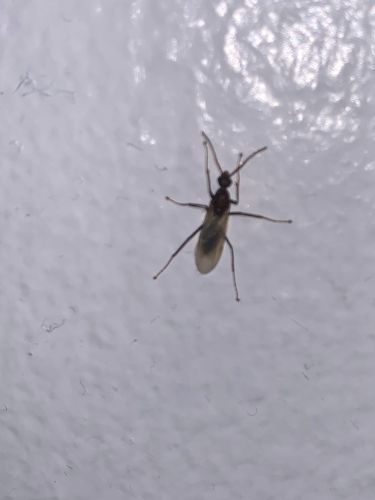Fungus Gnat (likely a dark-winged fungus gnat)
Scientific Name: Likely a species within genera such as 'Bradysia' or 'Sciara' (Sciaridae) or 'Mycetophila' (Mycetophilidae), exact species identification requires microscopic examination.
Order & Family: Order Diptera, Family Sciaridae or Mycetophilidae
Size: Adults are typically 1/8 to 1/4 inch (3-6 mm) long.

Natural Habitat
Moist environments with decaying organic matter, particularly soil of houseplants, greenhouses, compost piles, and areas with water leaks or high humidity. They thrive in overly wet potting mix.
Diet & Feeding
Adult fungus gnats typically do not feed or feed on liquids. The larvae feed on fungi, decaying organic matter, and sometimes plant roots, especially fine root hairs of seedlings or weakened plants.
Behavior Patterns
Fungus gnats are often seen flying in small swarms, especially near potted plants or sources of moisture. Larvae live in the soil and feed on fungi and decaying organic matter. Adults are short-lived, primarily focused on reproduction. They are attracted to light and moisture.
Risks & Benefits
Risks: Larvae can damage plant roots, especially in young seedlings or stressed plants, leading to wilting or stunted growth. They can be a nuisance indoors due to their presence. Benefits: In natural environments, they contribute to decomposition and nutrient cycling by breaking down organic matter. They serve as a food source for other organisms.
Identified on: 8/17/2025